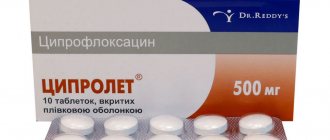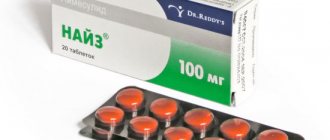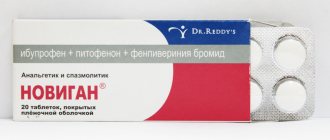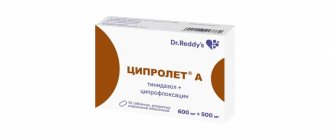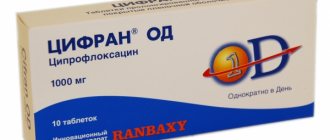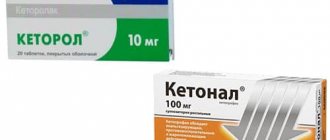Home | About us | Delivery | Advertisers | Login | Registration
Delivery on Sundays and holidays does not work!
- Medicines
- dietary supplementsVitamins
- Categories from A to Z
- Brands from A to Z
- Products from A to Z
- Medical equipment
- beauty
- Child
- Care
- Honey products appointments
- Herbs and herbal teas
- Medical nutrition
- Journey
- Making medicinesStock
Pharmacy online is the best pharmacy in Almaty, delivering medicines to Almaty. An online pharmacy or online pharmacy provides the following types of services: delivery of medicines, medicines to your home. Online pharmacy Almaty or online pharmacy Almaty delivers medicines to your home, as well as home delivery of medicines in Almaty.
my basket
Apteka84.kz is an online pharmacy that offers its customers medicines, medicinal and decorative cosmetics, dietary supplements, vitamins, baby food, intimate products for adults, medical equipment and thousands of other medical and cosmetic products at low prices. All data presented on the Apteka84.kz website is for informational purposes only and is not a substitute for professional medical care. Apteka84.kz strongly recommends that you carefully read the instructions for use contained in each package of medicines and other products. If you currently have any symptoms of the disease, you should seek help from a doctor. You should always tell your doctor or pharmacist about all the medicines you take. If you feel you need further help, please consult your local pharmacist or contact our GP online or by telephone.
© 2022 Pharmacy 84.
Ciprolet® a (Ciprolet a)
A combined drug whose effect is determined by the components included in its composition.
Ciprofloxacin
— a broad-spectrum antimicrobial agent, a fluoroquinolone derivative, suppresses bacterial DNA gyrase (topoisomerases II and IV, responsible for the process of supercoiling of chromosomal DNA around nuclear RNA, which is necessary for reading genetic information), disrupts DNA synthesis, growth and division of bacteria; causes pronounced morphological changes (including cell wall and membranes) and rapid death of the bacterial cell.
It has a bactericidal effect on gram-negative organisms during the period of rest and division (since it affects not only DNA gyrase, but also causes lysis of the cell wall), on gram-positive microorganisms - only during the period of division. Low toxicity for the cells of the macroorganism is explained by the absence of DNA gyrase in them. While taking ciprofloxacin, there is no parallel development of resistance to other antibiotics that do not belong to the group of gyrase inhibitors, which makes it highly effective against bacteria resistant to aminoglycosides, penicillins, cephalosporins, tetracyclines and many other antibiotics.
Ciprofloxacin is active against gram-negative aerobic bacteria
: Escherichia coli, Salmonella spp., Shigella spp., Citrobacter spp., Klebsiella spp., Enterobacter spp., Proteus mirabilis, Proteus vulgaris, Serratia marcescens, Hafnia alvei, Edwardsiella tarda, Providencia spp., Morganella morganii, Vibrio spp., Yersinia spp.;
other gram-negative bacteria
- Haemophilus spp., Pseudomonas aeruginosa, Moraxella catarrhalis, Aeromonas spp., Pasteurella multocida, Plesiomonas shigelloides, Campylobacter jejuni, Neisseria spp.);
some intracellular pathogens
- Legionella pneumophila, Brucella spp., Listeria monocytogenes, Mycobacterium tuberculosis, Mycobacterium kansasii;
gram-positive aerobic bacteria
: Staphylococcus spp. (Staphylococcus aureus, Staphylococcus haemolyticus, Staphylococcus hominis, Staphylococcus saprophyticus), Streptococcus spp. (Streptococcus pyogenes, Streptococcus agalactiae).
Most methicillin-resistant staphylococci are resistant
and to ciprofloxacin. Resistance develops extremely slowly, since, on the one hand, after the action of ciprofloxacin there are practically no persistent microorganisms left, and on the other hand, bacterial cells do not have enzymes that inactivate it.
to the drug :
Bacteroides fragilis, Pseudomonas cepacia, Pseudomonas maltophilia, Ureaplasma urealyticum, Clostridium difficile, Nocardia asteroides. Not effective against Treponema pallidum.
Tinidazole
- antiprotozoal and antimicrobial agent, imidazole derivative.
Active against
Trichomonas vaginalis, Entamoeba histolitica, Lamblia, as well as pathogens of anaerobic infections - Clostridium spp., Bacteroides fragilis, Bacteroides melaninogenicus, Eubacter spp., Fusobacterium spp., Peptococcus spp. and Peptostreptococcus spp.
Being a highly lipophilic compound, tinidazole penetrates into Trichomonas and anaerobic microorganisms, where it is reduced by nitroreductase, inhibits synthesis and damages the DNA structure.
Tsiprolet film-coated tablets 500 mg 10 pcs. in Syktyvkar
Drugs that cause prolongation of the OT interval
Caution should be exercised when simultaneous use of ciprofloxacin as well as other fluoroquinolones in patients receiving drugs that cause prolongation of the QT interval (for example, class IA and III antiarrhythmic drugs, tricyclic antidepressants, macrolides, antipsychotics).
Chelation formation
Simultaneous intake of tablet forms of ciprofloxacin and cation-containing preparations of mineral supplements containing calcium, magnesium, aluminum, iron sucralfate, antacids, polymeric phosphate compounds (sevelamer lanthanum carbonate) and drugs with a large buffer capacity (such as didanosine tablets) containing magnesium, aluminum or calcium reduces the absorption of ciprofloxacin. In such cases, ciprofloxacin should be taken either 1-2 hours before or 4 hours after taking these drugs.
This restriction does not apply to drugs belonging to the class of H2-histamine receptor blockers.
Intake of food and dairy products
The simultaneous use of ciprofloxacin and dairy products or drinks fortified with minerals (milk, yogurt, calcium-fortified orange juice) should be avoided since the absorption of ciprofloxacin may be reduced. However, calcium contained in other foods does not significantly affect the absorption of ciprofloxacin.
Omeprazole
With the combined use of ciprofloxacin and omeprazole, a slight decrease in plasma Cmax and a decrease in the area under the concentration-time pharmacokinetic curve (AUC) may be observed.
Theophylline
The simultaneous use of ciprofloxacin and drugs containing theophylline may cause an undesirable increase in the concentration of theophylline in the blood plasma and, accordingly, the occurrence of theophylline-induced adverse events; in very rare cases, these adverse events can be life-threatening for the patient. If the simultaneous use of these two drugs is necessary, it is recommended to constantly monitor the concentration of theophylline in the blood plasma and, if necessary, reduce the dose of theophylline.
Other xanthine derivatives
The simultaneous use of ciprofloxacin and caffeine or pentoxifylline (oxpentifylline) may lead to an increase in the concentration of xanthine derivatives in the blood serum.
Nonsteroidal anti-inflammatory drugs
The combination of very high doses of quinolones and some non-steroidal anti-inflammatory drugs (excluding acetylsalicylic acid) can provoke seizures.
Cyclosporine
With the simultaneous use of ciprofloxacin and drugs containing cyclosporine,
short-term transient increase in plasma creatinine concentration. In such cases, it is necessary to determine the concentration of creatinine in the blood twice a week.
Oral hypoglycemic agents
With the simultaneous use of ciprofloxacin and oral hypoglycemic agents, mainly sulfonylureas (for example, glibenclamide glimepiride), the development of hypoglycemia may be due to an increase in the effect of oral hypoglycemic agents.
Probenecid
Probenecid slows down the rate of excretion of ciprofloxacin by the kidneys. The simultaneous use of ciprofloxacin and drugs containing probenecid leads to an increase in the concentration of ciprofloxacin in the blood serum.
Phenytoin
With the simultaneous use of ciprofloxacin and phenytoin, a change (increase or decrease) in the content of phenytoin in the blood plasma was observed. It is recommended to monitor phenytoin therapy in patients taking both drugs, including determining the level of phenytoin in the blood plasma.
Methotrexate
With the simultaneous use of methotrexate and ciprofloxacin, the renal tubular transport of methotrexate may slow down, which may be accompanied by an increase in the concentration of methotrexate in the blood plasma. This may increase the likelihood of developing side effects of methotrexate. In this regard, patients receiving concomitant therapy with methotrexate and ciprofloxacin should be closely monitored.
Tizanidine
As a result of a clinical study involving healthy volunteers, the simultaneous use of ciprofloxacin and drugs containing tizanidine revealed an increase in the concentration of tizanidine in the blood plasma: an increase in Cmax by 7 times (from 4 to 21 times) an increase in AUC by 10 times (from 6 to 24 times). Hypotensive and sedative side effects are associated with increased serum concentrations of tizanidine. Therefore, the simultaneous use of ciprofloxacin and drugs containing tizanidine is contraindicated.
Duloxetine
During clinical studies, it was shown that the simultaneous use of duloxetine and potent inhibitors of the CYP450 1A2 isoenzyme (such as fluvoxamine) may lead to an increase in the AUC and Cmax of duloxetine. Despite the lack of clinical data on possible interactions with ciprofloxacin, the likelihood of such an interaction can be anticipated when ciprofloxacin and duloxetine are used simultaneously.
Ropinirole
The simultaneous use of ropinirole and ciprofloxacin, a moderate inhibitor of the CYP450 1A2 isoenzyme, leads to an increase in the Cmax and AUC of ropinirole by 60 and 84%, respectively. Monitor for adverse effects of ropinirole during coadministration with ciprofloxacin and for a short time after completion of combination therapy.
Lidocaine
In a study on healthy volunteers, it was found that the simultaneous use of drugs containing lidocaine and ciprofloxacin, a moderate inhibitor of the CYP450 1A2 isoenzyme, leads to a decrease in the clearance of lidocaine by 22% when administered intravenously. Despite the good tolerability of lidocaine, when used simultaneously with ciprofloxacin, side effects may increase due to interaction.
Clozapine
With the simultaneous use of clozapine and ciprofloxacin at a dose of 250 mg for 7 days, an increase in serum concentrations of clozapine and N-desmethylclozapine was observed by 29% and 31%, respectively. The patient's condition should be monitored and, if necessary, the dosage regimen of clozann should be adjusted during its combined use with ciprofloxacin and for a short time after completion of combination therapy.
Sildenafil
With simultaneous use of ciprofloxacin at a dose of 500 mg and sildenafil at a dose of 50 mg in healthy volunteers, a 2-fold increase in Cmax and AUC of sildenafil was observed. In this regard, the use of this combination is possible only after assessing the benefit/risk ratio.
Vitamin K antagonists
The combined use of ciprofloxacin and vitamin K antagonists (for example, warfarin acenocoumarol fenprocoumon fluindone) may lead to an increase in their anticoagulant effect. The magnitude of this effect may vary depending on concomitant infections, age and general condition of the patient, so it is difficult to assess the effect of ciprofloxacin on increasing the international normalized ratio (INR). The INR should be monitored quite frequently during co-administration of ciprofloxacin and vitamin K antagonists and for a short time after completion of combination therapy.
